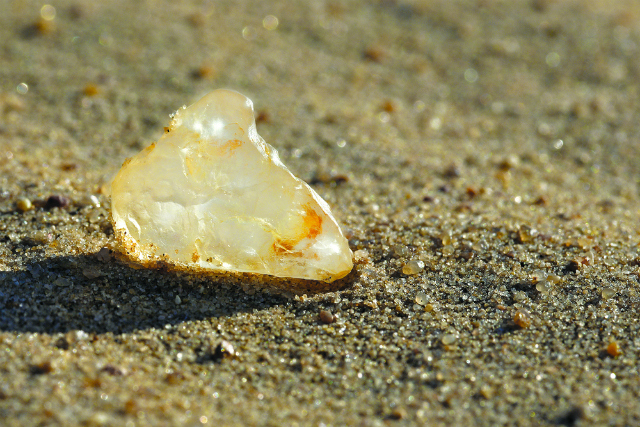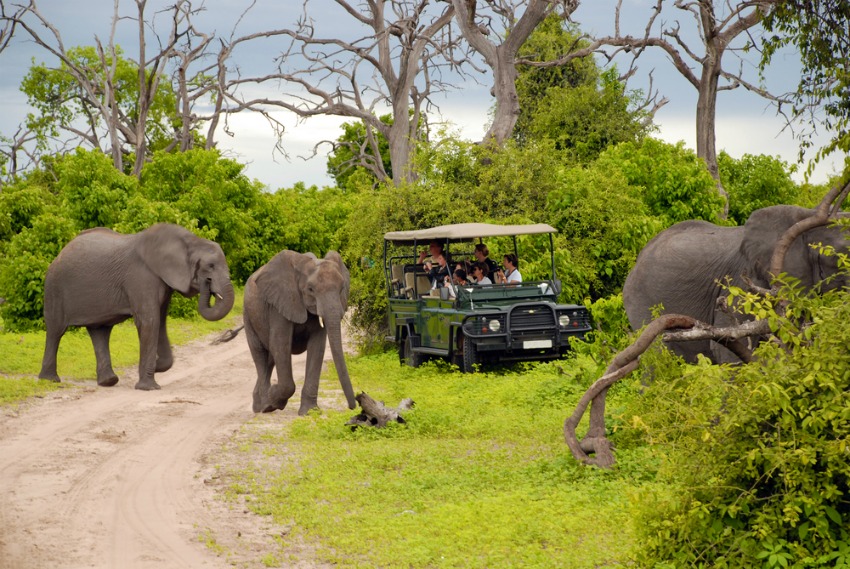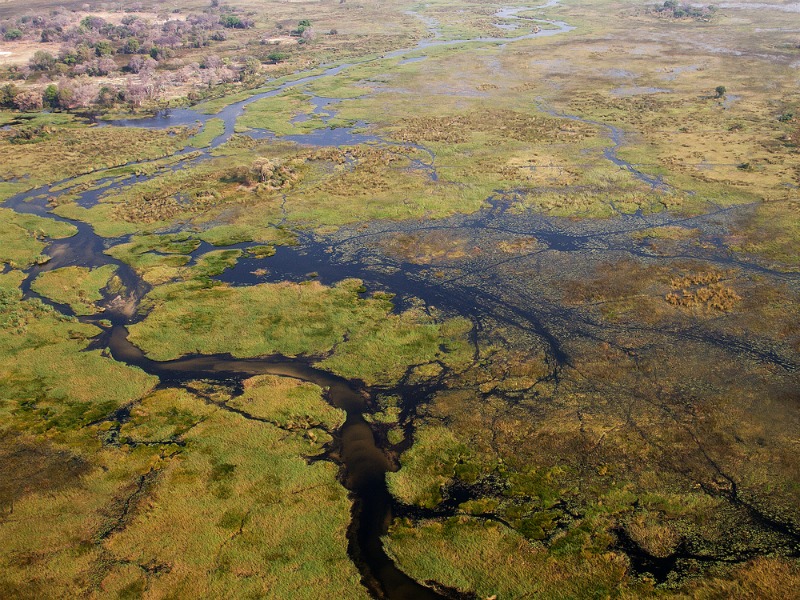An explorer’s paradise, traveling in Botswana exposes tourists to a vast, mostly roadless wilderness filled with with fascinating ecosystems including savannas, wetlands, deserts and massive salt pans, plus some of the world’s best, most luxurious safaris. The country is also one of Africa’s political and ideological success stories, with an economically stable population that has access to some of the continent’s best health care and education. Here are 10 essential things to know about traveling in Botswana.
This article originally appeared on AFKInsider.com.
1. It’s a rich country
Shortly after Botswana gained independence in 1966, three of the world’s richest diamond sites were discovered within its borders. The discovery transformed the country economically, and today the average citizen still reaps the benefits. The concession for the diamond mining was given to DeBeers, with the Botswana government taking a 75% cut.
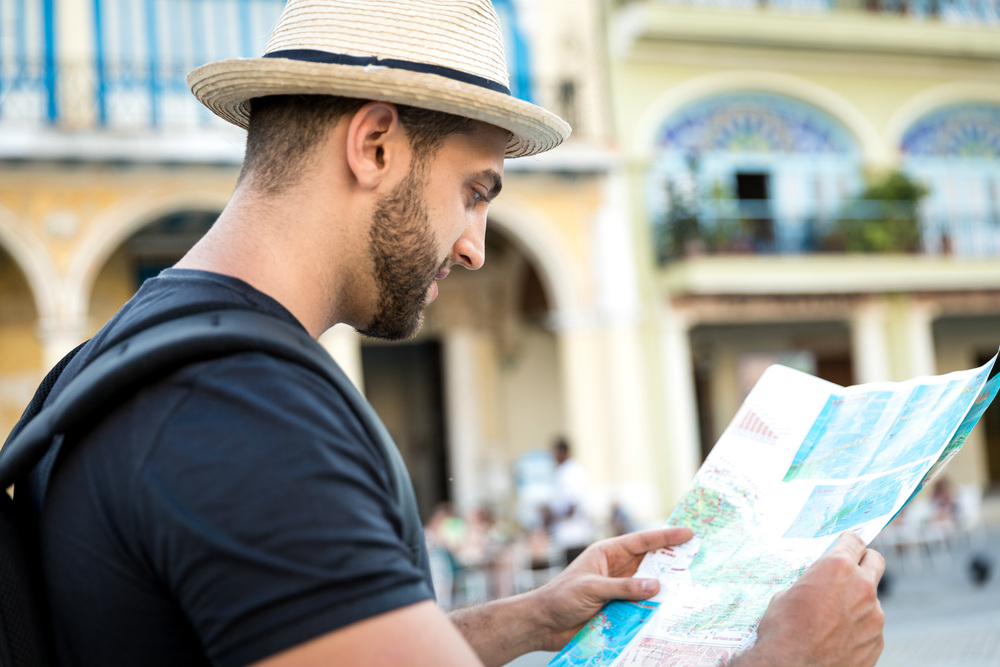
Shutterstock
2. Travel is expensive
When Botswana developed its tourism industry, it went for high-end luxury rather than the budget backpacker set. As such, it is one of the most expensive African countries to visit, with safari lodges usually starting in the hundreds, if not thousands of dollars per night. Factor in a lack of roads and flights on small charter planes, and the costs keep climbing.
3. Safaris here are fantastic
They may cost more than South Africa or Namibia, but safaris here are truly fantastic. There’s little development and a year-round water supply in the form of the Okavango and Chobe Rivers — major parks are centered around these rivers. Whether you chose to do a safari in the Moremi Wildlife Reserve or Chobe National Park, you’ll find it to be packed with wildlife and the luxury lodgings are superlative.
4. The Kalahari Desert covers 85% of Botswana
The Kalahari Desert covers 85% of the Central and Southwestern areas, but despite the name, it is actually only a semi-arid region with some surprisingly lush parts. This area is perhaps best know for the Bushmen (San) people who have inhabited it for millennia.
5. Botswana is also home to an inland sea
Stretching like an open palm across Northwestern Botswana, the Okavango Delta is a national treasure and when filled during the rainy season, is one of the world’s most spectacular nature sights. The 1,400+ km Okavango River, which begins in Central Angola, is an anomaly in that it never reaches an ocean. Instead, the river ends in a 15,000 sq km maze of lagoons and channels known as the Okavango Delta.
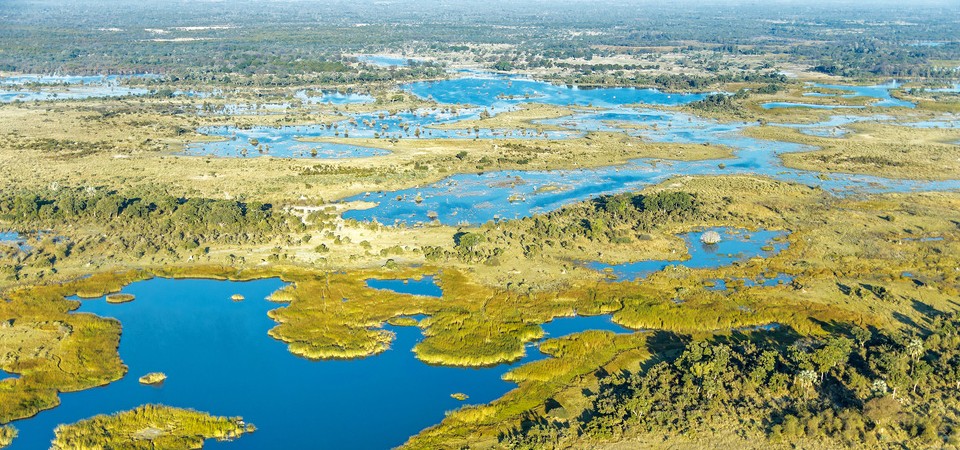
Shutterstock
6. The Okavango Delta is famous for mokoro trips
The best way to experience the Delta is via a mokoro — a traditional wooden dug-out canoe that usually accommodates two guests and a poler. The poler does all the paddling and steering, allowing you to focus on your wildlife photography.
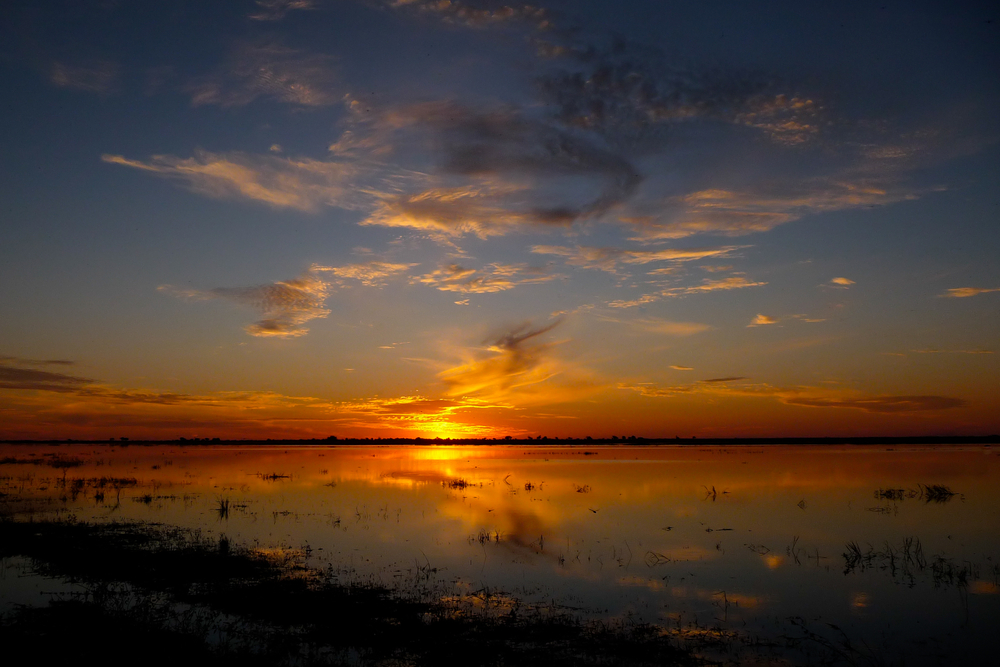
Chobe River (Shutterstock)
7. Chobe is the country’s original national park
Chobe National Park in northeastern Botswana is not only one of the country’s most accessible national parks — at least from other countries — it is also its first, established a year after independence in 1967. The park combines four ecosystems and is home to a large leopard population.
8. Along with diamonds, Botswana has loads of salt
Botswana’s great salt pans, Sua and Ntwetwe, make up the 80,000-square-kilometer Makgadikgadi Pans, a wilderness like no other place on Earth. Expect heat mirages to destroy your sense of space and direction, especially when shimmering in the scorching temperatures of a late summer day. You’ll need a 4WD vehicle and working GPS to navigate this wondrous wasteland.
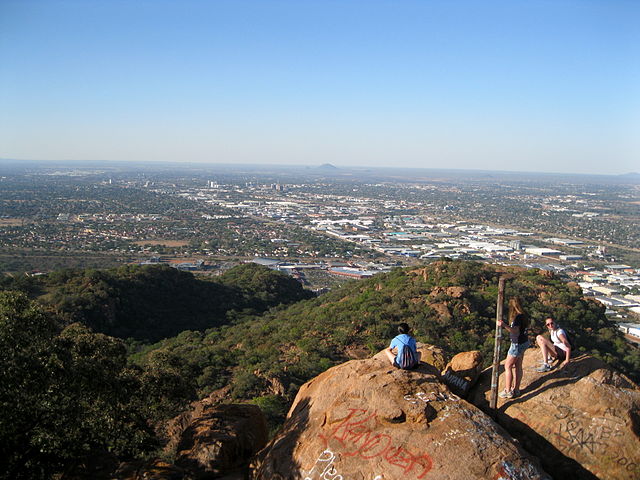
(Athena Lao/Wikipedia Commons)
9. The capital city can be skipped
Botswana’s safe capital city of Gaborone is no Johannesburg or Lagos when it comes to crime or size, but it also isn’t Cape Town when it comes to beauty. Resembling a village suffering from growing pains as it transforms into a city, it is of little interest to tourists and has no must-see attractions.

Makgadikgadi Pans, Botswana. Shutterstock
10. Come for the safari, not the art
While Zimbabweans are famous for their work with stone and South African tribes have mastered the art of beautifully beaded basketry, Botswana is not known as a handicraft destination. Most of the art found in roadside craft stalls comes from other parts of the continent. Visitors should come for the safaris and the experience, not the souvenirs.
Related content on AFKTravel:
Get Radically Relaxed At These Spa Resorts And Camps In Botswana
10 Secret Corners of Botswana’s Kalahari
Luxury In The Wilderness: 15 Places To Go Glamping In Botswana
Want to discover the finer side of Africa? Sign up for our weekly newsletter.
